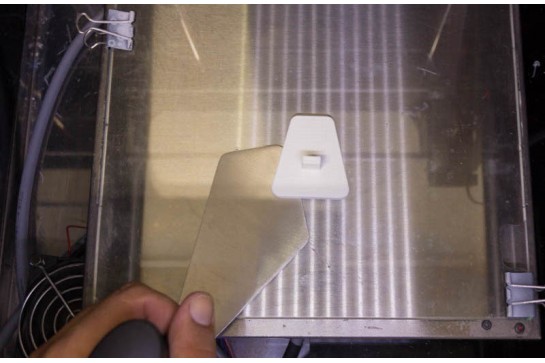
To finish off the "Tips for 3D Printing" series, the following article focuses on tips after 3D printing, including how to separate the part from the base and cleaning the extruder after using materials that contain fibers, which are prone to generate jams, such as the PLA-Carbon Fiber.
1. Separate the part from the base
When a 3D print finishes, a period of time (5-10 minutes) must be allowed before separating the part from the base and manipulating it so that it cools down sufficiently and is below the softening temperature. If this is not met, the workpiece will be deformed and will lose some finishing quality. After the time indicated before, the piece can be separated, helping, if possible, by a spatula. If a spatula is not available, wait until the base is at room temperature or use a rudimentary quick-cooling technique, such as inserting the base into a refrigerator or a freezer or pouring the base through the base side opposite the piece with cold water until you hear a creak, indicating that the piece has already partially detached the base and can already be separated by hand.
When materials sensitive to sudden temperature changes (ABS or Nylons), are used, a gradual decrease of the temperature of the base should be made after the 3D printing is finished to avoid deformations in the part. This process can be done with programs like the Simplify3D, programming the base temperature decrease in intervals of 5 ºC until reaching the ambient temperature.
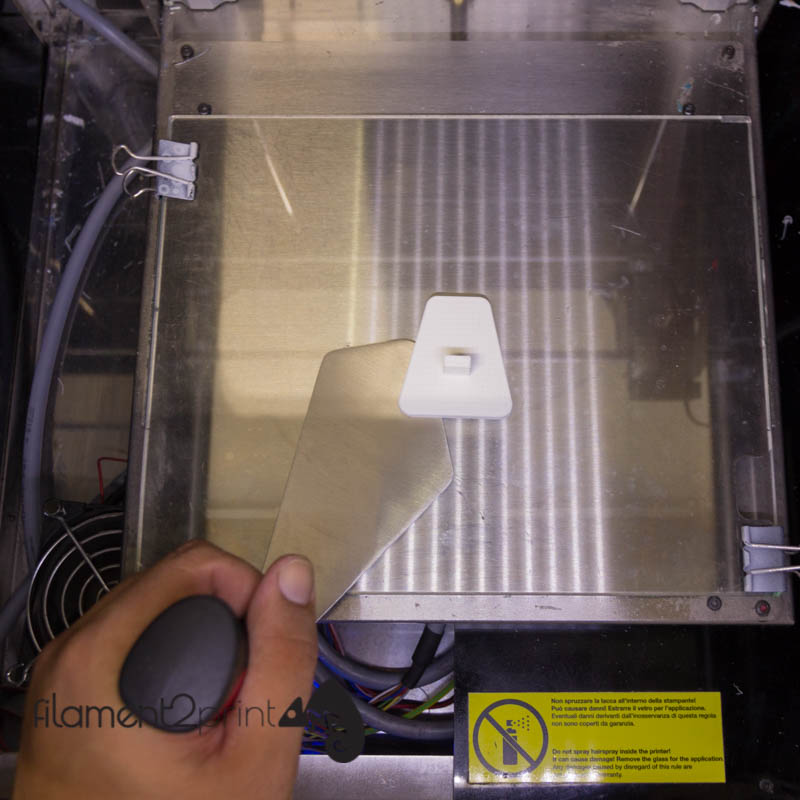
Image 1: Spatula BuildTak
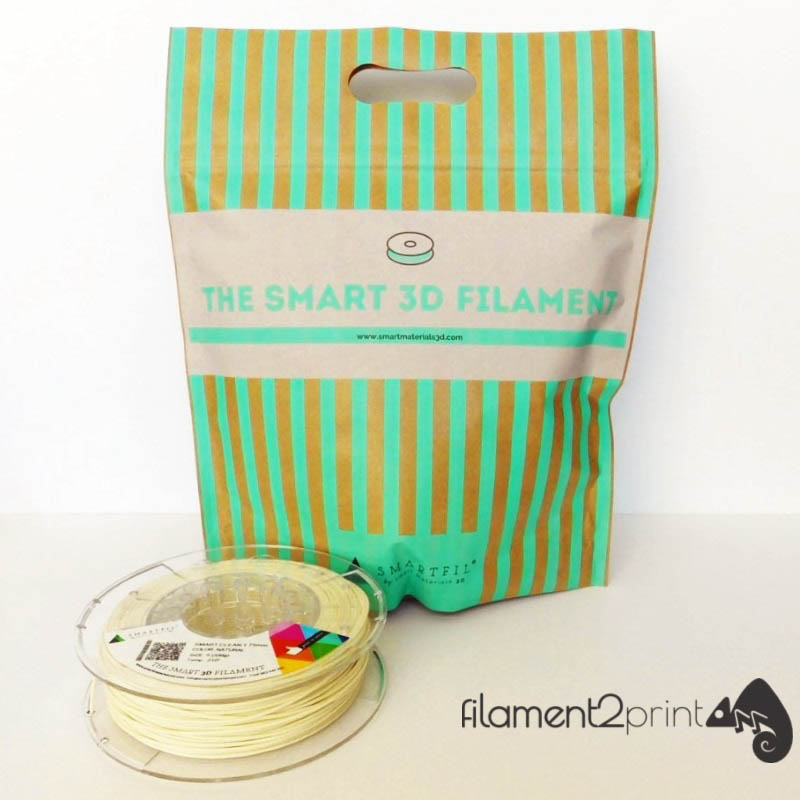
Image 2: Smart Clean cleaning filament
2. Cleaning the extruder
After using abrasive materials that contain fibers and are prone to jamming, such as PLA-Carbon Fiber or Nylon-Carbon Fiber CF15, the user should clean the inside of the extruder so that they don't solidify the debris these filaments and no future jams. For this the Smart Clean cleaneing filament can be used, a material that is used at 10 °C more than the temperature of the filament of the last 3D impression, for a little more than 1 meter or until the filament leaves the nozzle free of debris from the material of the previous 3D impression. This operation prevents jams from occurring and increases the life of the extruder.
3. Cleaning the base
Many 3D printers have a glass base or other type of base where spray is sprayed (3DLac o DimaFix) that helps the part's adhesion during several impressions. After several uses the spray should be sprayed again, but not before washing the base with water (better cold) and with soap. Simply applying a little soap on the base, a little water and rubbing with the hand, is more than enough to clean the base. Finally, dry it with paper and check that there are no traces of spray on the base.
4. Check the dimensions and finish of the piece
After removing the part from the printer base, an overall check of the dimensions and finish should be performed to ensure that the 3D printer is operating correctly. With a gauge one must measure the external dimensions of the piece and the internal gaps if any, if these are not correct the calibration of the 3D printer, mainly the base and the steps of the motors must be checked. If the surface finish is not good, it is probably the fault that the printing temperature being used is not correct or that the extruder (or nozzle) is dirty or in poor condition.
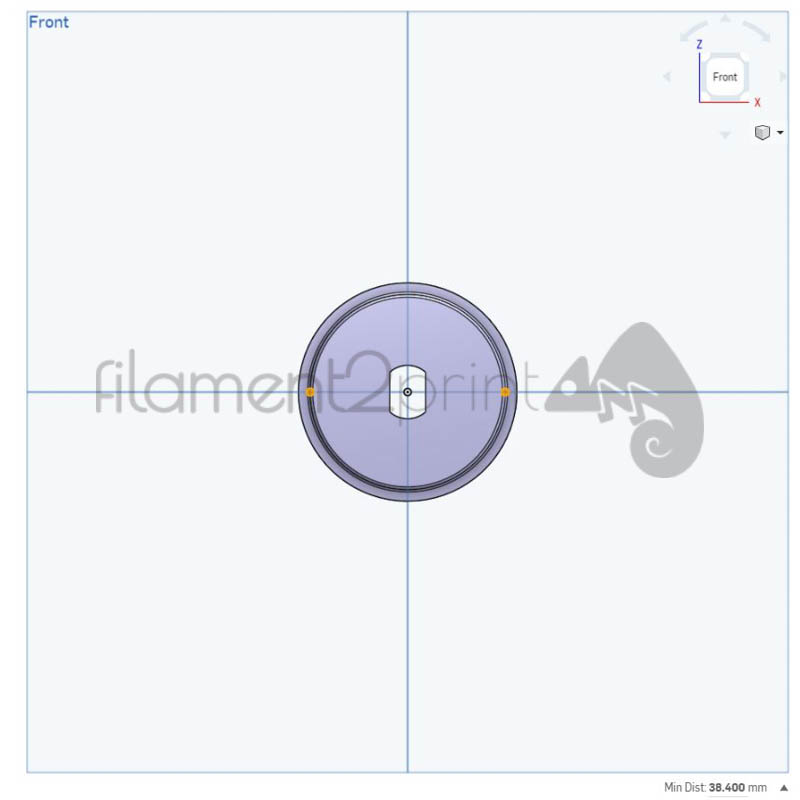
Image 3: Theoretical diameter measurement
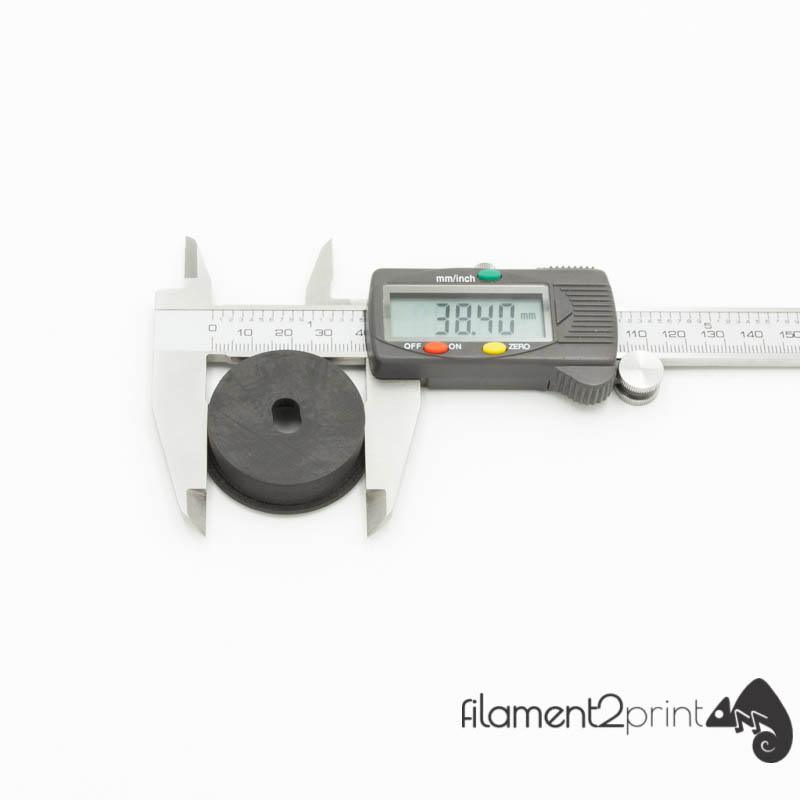
Imagen 4: Actual diameter measurement
5. Surface finishing
When making parts that need a great surface finish, some of the finishing techniques, such as applying acetone or acetone vapor (valid only for parts made of ABS) or applying some finishing product such as epoxy resin coating (XTC) which, in addition, allow to sanding or to paint a posteriori and thus to obtain a finish practically smooth so that the layers in the piece are not appreciated.
Vídeo 1: ASurface finishing with XTC
This article concludes the series of "Tips for 3D printing", which has exposed the most common problems before, during and after 3D printing FDM/FFF and explained the main solutions to avoid or solve them.













hola, quisiera saber como se hace para programar para que la temperatura de la cama vaya bajando gradualmente una vez finalizada la impresion, para cuando imprimo en ABS gracias
Hola Verónica, si deseas realizar el enfriamiento una vez terminada la impresión sólo lo puedes realizar de forma manual. De forma automatizada antes de terminar y si utilizas el Simplify3D, en la pestaña de temperaturas puedes cambiar la temperatura de la base en función de la capa. De forma genérica, puedes modificar la temperatura de la últimas capas directamente en el GCode. En el programa de laminación que utilices buscas el número de las últimas capas, después en el GCode y con la herramienta de "Buscar", buscas la capa en la que deseas modificar la temperatura y escribes el comando "M140 Sxx", donde las "xx" son la temperatura. Recuerda realizar un enfriamiento progresivo.
Mis impresiones se van achicando a medida que sube en z la impresión. Que puedo hacer???
Hola Gabriela, por tu comentario puede ser un problema de flujo. Te recomiendo que visites nuestro artículo sobre el flujo. Puedes acceder a él en el siguiente link.
Thanks for mentioning that print finishes need a period of time before the separation of the base and manipulation. My brother is thinking about doing some printing next week because he's contemplating trying to create with black PLA 3D filament and wants to see what he can make. I think it's a good investment to shop from a reputable company that has the material that he needs in order to make what he's trying to do. https://threedeefilaments.ca/black-pla-3d-filament
We do not distribute that particular PLA brand, but you can take a look at our different PLA ranges (Basic, Smartfil and Premium).
hola , buenas tardes. estoy fabricando unas pequeñas piezas en nylon , con una ender3 pro. una vez terminadas si las fuerzo se rompen, necesito que la pieza terminada soporte algo de tenperatura.
Hola Elio.
Es posible que el filamento de nylon que estás utilizando tenga algo de humedad. Te aconsejaríamos utilizar una secadora de filamentos para garantizar el mantenimiento de sus propiedades.
Hola buenas, hace poco que hice un par de impresiones con mi impresora nueva, y las cosas sale con hilillos, queria saber, aparte de como arreglar la impresora para que no vuelva a hacer lo mismo, como hacer para quitar los hilos de la impresión.
Hola Nawal.
En este post encontrarás información de utilidad para tu problema: ¿Qué es la retracción en impresión 3D? Definición y ajustes
Tengo una CR10s Pro, cuando uso los programas me sale que se demora 4 hrs, al momento de hacerlo se demora 6, es normal esto? o debería ser el tiempo que indica el programa?? Me paso con la primera impresión el chanchito de 4 hrs, se hizo en 6. Slds
Hola Nicolás, ¿Al iniciar trabajo ya tienes la impresora en pre-heat? Por otro lado, es posible que tengas desviaciones en el software de generación e gcode (laminado-slicing) con respecto a los límites reales de la impesora 3D (velocidades y aceleraciones). Revisa estos puntos y harás más precisas las simulaciones y los tiempos.
Tengo una ender3 y cada vez que imprimo algo le pone una base que no es fácil quitar de la pieza final. Hay forma de deshabilitar esta opción y que imprima la pura pieza
HOLA NECESITO SABER QUE ACABADO SE LE DA A TAZAS O MATES O VASOS PARA QUE NO FILTRE AGUA Y QUE NO SEA TOXICO.GRACIAS
Imprimí una pieza grande en ABS, le hice balsa para que no se despegara. Mi pregunta es cómo quito la balsa?
Buenos días Verónica, Si no consigues despegar fácilmente la balsa es porque la distancia entre la pieza y la balsa es demasiado pequeña. Prueba a aumentar el valor de "cámara de aire de la balsa" hasta el 175% del valor de altura de capa que estés usando.
Hola buenas noches Como podria evitar las lineas horizontales en las piezas, he calibrado y ajustado todo. Podria ser problema de flow ?? Muchas gracias Saludos
Hola, cómo puedo separar la pieza de la base RAFT (la base que crea la impresora de la pieza a imprimir)? Actualmente nos es imposible de separar de manera fácil. Nuestra impresora es Zortrax M200. Gracias,
Hola, Aina! En ocasiones, dependiendo del material utilizado y los parámetros de impresión, puede resultar algo difícil separar el RAFT de la pieza. Existen algunas herramientas que pueden ser de utilidad, como Modifi3D Original o Modifi3D Pro. Estas herramientas cuentan con un cabezal de efecto cuchillo muy útil para retirar el RAFT. Puedes encontrarlo en la categoría Post-Procesado en nuestra web.
Consulta, debo esperar a que.la cama enfríe antes de apagar la impresora? O puedo apagarla apenas termine la pieza de hacerse? Gracias
3D printing is a technology that has empowered people of all backgrounds and professions to create,but like all new technology’s there is a bit of a learning curve when it comes to 3D printing. Edwin Richardson | 3dwholesale.com
Thanks for explaining how to clean the base of a printer. I've always thought that 3D printing is so cool. There are so many useful things you can do with it!